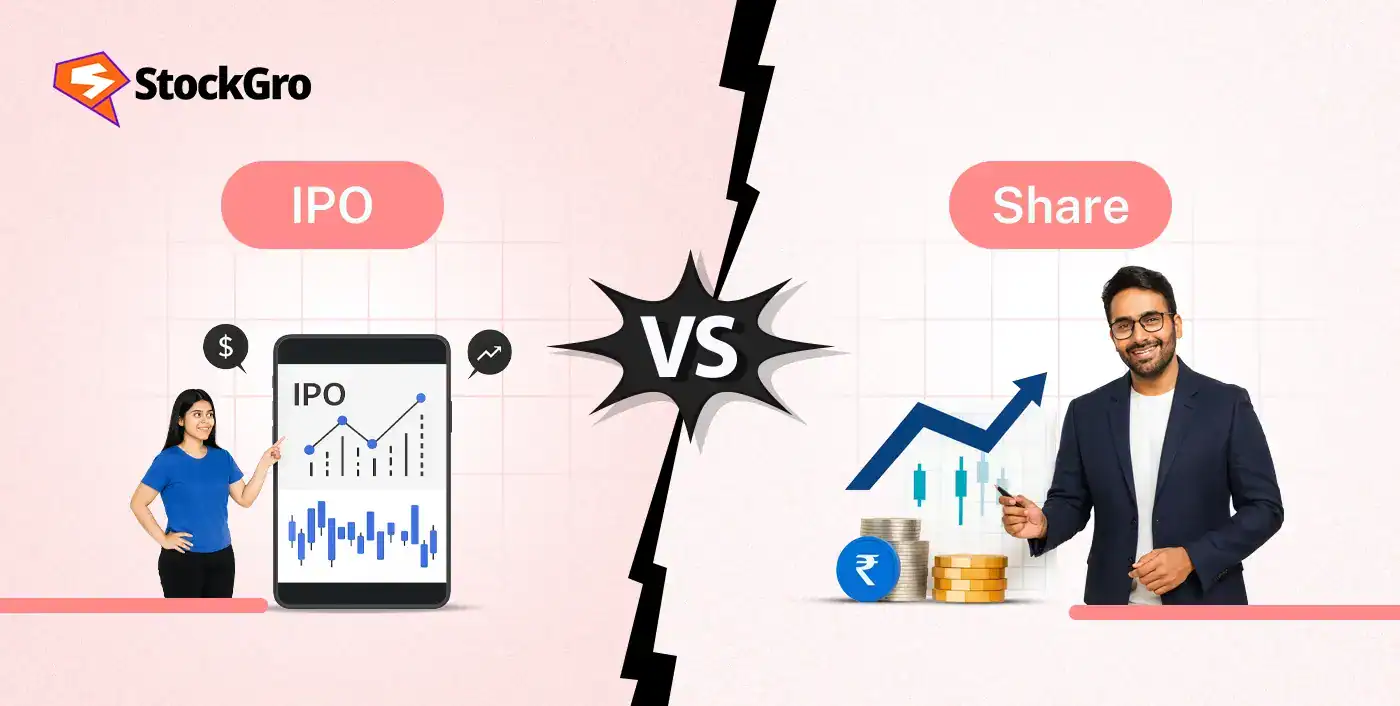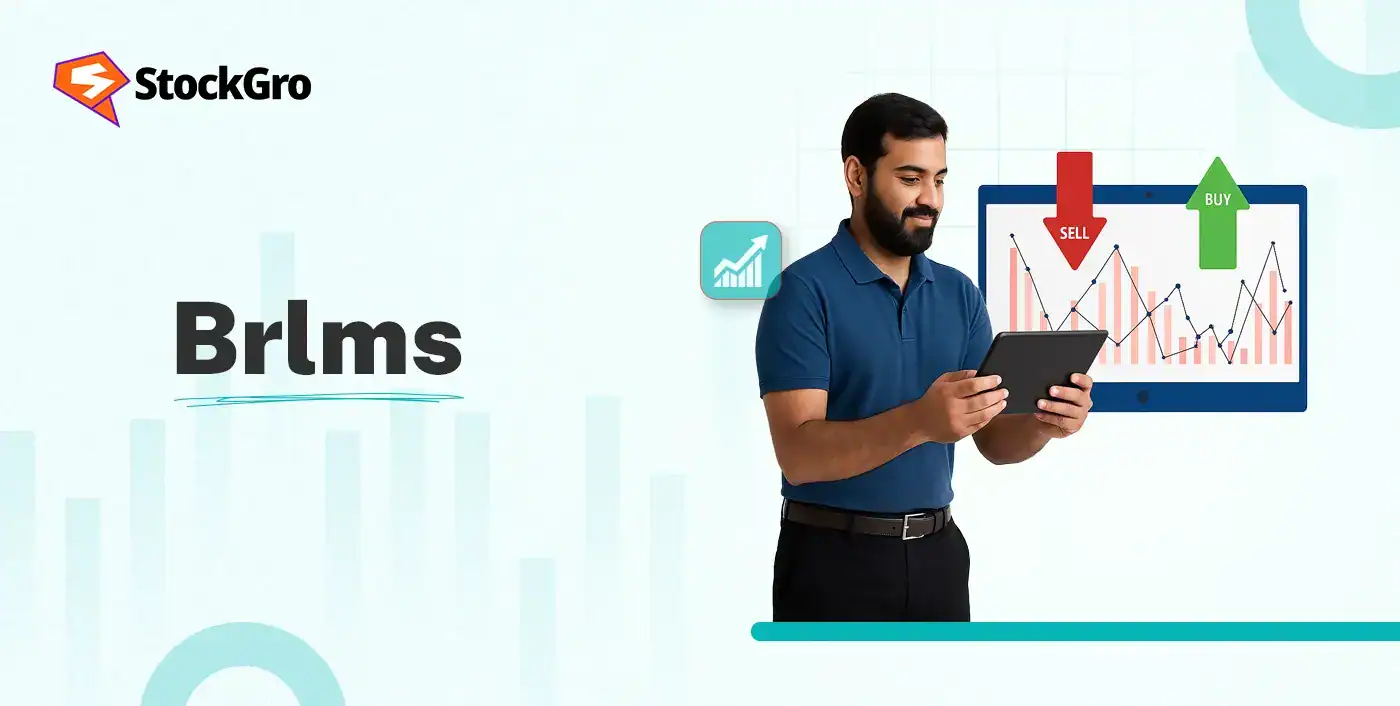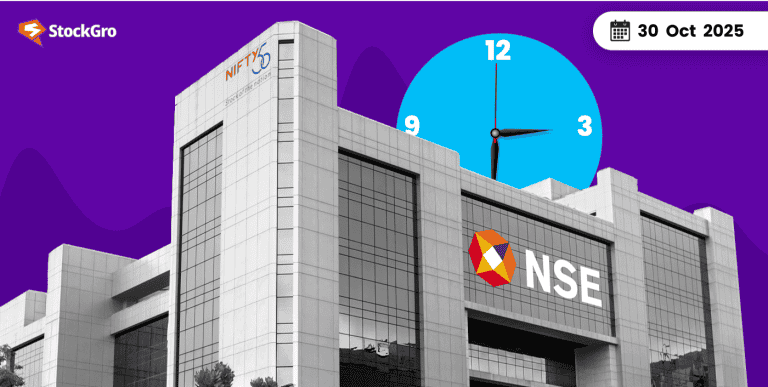
Knowing the difference between IPO and share is essential for anyone stepping into the stock market. In the first quarter of 2025, India captured 22% of global IPO activity, raising around $2.8 billion across 62 listings. While an IPO marks a company’s debut into the public market, shares represent the ownership that investors hold once that offering is complete. This blog breaks down how these two concepts differ, how they connect, and what each means for an investor’s participation.
What is an IPO?
An IPO, or Initial Public Offering, is the process a private company uses to sell its shares to the public for the first time. Before an IPO, a company is privately owned, often by its founders, employees, and early investors. By “going public,” the company raises money, also known as capital, from new investors. This new capital is often used by the company to fund its growth, expand its operations, or pay off debt. After the IPO, the company’s shares are listed and can be traded on a stock exchange.
What are Regular Stocks?
Regular stocks, also known as shares or equities, represent part-ownership in a company that is already listed on a stock exchange. Unlike an IPO, regular stocks are traded in the secondary market. This means that instead of buying shares from the company, investors buy and sell existing shares from other investors. The prices of regular stocks change constantly throughout the trading day. These price changes are based on market demand and supply, as well as the company’s performance and public news. Regular stocks are generally accessible and can be bought or sold easily.
Key Differences Between IPOs and Regular Stocks
The difference between IPO and share becomes clearer when comparing how each functions in the market. In an IPO vs regular stock investment, factors like how and where they are bought, priced, and traded vary significantly.
| Feature | IPO (Initial public offering) | Regular share (Listed stock) |
| Market type | Traded in the primary market, where investors buy directly from the company during its public issue. | Traded in the secondary market, where investors buy and sell among themselves on stock exchanges. |
| Company stage | Represents a private company going public for the first time. | Represents a company already listed and publicly traded. |
| Pricing method | Price is fixed or offered within a pre-decided price band by the company and its underwriters. | Price changes throughout the day based on market demand and supply. |
| Who issues shares | Shares are newly issued by the company to raise capital. | Shares are existing ones exchanged between investors. |
| Information availability | Limited financial and performance history since the company is newly listed. | Extensive public data and analysis available from previous filings and reports. |
| Risk profile | Generally considered higher risk due to lack of historical data. | Varies depending on the company’s size, stability, and performance history. |
Pros and Cons of Investing in IPOs
When a company launches an IPO, investors may consider several things, such as:
Pros
- Access to new companies: IPOs open the door for investors to participate in the early stages of a company’s public journey, often before it becomes widely known or established in the market.
- Scope for high profits: Well performing IPOs can deliver strong returns, especially when the company’s market debut is well-received and its value increases significantly in a short time.
- Buying at issue price: Investors get the opportunity to purchase shares directly at the issue price set by the company, often lower than the price it may later reach once listed.
- Supporting growth: By investing in an IPO, investors indirectly help the company raise fresh capital that can be used to fund expansion, repay debt, or strengthen its operations.
- Opportunity of early gains: Some IPOs experience quick upward movement in share prices after listing, allowing early investors to benefit from short-term price appreciation.
Cons
- Greater risk: IPO investments can be riskier since the company is new to the market and lacks a long public performance record for investors to evaluate.
- Price fluctuation: Once listed, IPO stocks can witness sharp price movements, influenced by market demand, sentiment, or overall economic factors.
- Limited information: Although companies publish a prospectus, investors have limited historical data, making it harder to assess long-term potential or stability.
- Difficult access: IPO applications are open for a limited time, and due to oversubscription, retail investors may not receive the full allotment of shares they apply for.
- No assured profits: Not every IPO performs well post-listing. In some cases, the stock may even list below its issue price, leading to immediate losses.
Pros and Cons of Investing in Regular Stocks
Investing in regular, listed stocks also comes with its own set of considerations, as follows:
Pros
- Availability of information: Publicly traded companies provide quarterly results, annual reports, and detailed disclosures, giving investors ample data to make informed decisions.
- Established performance record: These companies have a proven market presence and a longer track record that reflects how they’ve handled growth, competition, and financial stability.
- Relatively stable pricing: Compared to new IPOs, well-established companies often experience steadier price movements, especially those with consistent business operations.
- Ease of buying and selling: Regular stocks can be traded freely during market hours, allowing investors to quickly enter or exit positions with high liquidity.
Cons
- Lower growth possibility: While generally safer, established stocks may not provide the same rapid returns as a newly listed company that experiences early success.
- Market-driven prices: Stock prices fluctuate daily based on overall demand, investor sentiment, or company news, which can affect returns in the short term.
- Volatility still exists: Even large and reputable companies can face sudden price drops due to earnings reports, policy changes, or global events.
- No fixed purchase price: Unlike IPOs, shares in the secondary market have no fixed issue price, and investors may have to buy at a premium depending on market conditions.
- Uncertain returns: Despite having more data available, regular stock investments are still subject to market risk and do not guarantee profits.
Conclusion
The difference between ipo and share is less about definitions and more about understanding market mechanics. One path involves backing a company as it enters the public domain, while the other involves trading ownership in companies already operating within it. Neither is universally better; the right choice depends on your individual financial goals, how much risk you are comfortable taking, and your overall investment timeline.
FAQ‘s
An IPO (Initial Public Offering) is the process wherein a private company offers its shares to the public for the first time, raising capital to fund growth, repay debt, or expand operations. Post-IPO, shares trade on stock exchanges, becoming publicly accessible.
Regular stocks are shares of companies already publicly listed on exchanges. These shares are traded between investors on the secondary market, with prices fluctuating based on market demand, company performance, and external news. Investors buy existing shares, not directly from the company.
IPOs represent a company’s public market debut, selling new shares at a fixed or banded price directly to investors. Regular stocks are traded freely on exchanges among investors, with prices varying continuously. IPOs often have higher risk due to limited historical data.
Investing in IPOs offers early access to promising companies, potential for substantial short-term gains, purchase at issue price (often lower), and supports the company’s growth and expansion. IPOs can be rewarding but are also more volatile and risky due to limited performance history.
IPOs carry risks of price volatility, limited historical financial data, potential overvaluation, and uncertain post-listing performance. They may suffer from subscription constraints leading to partial allotments, and prices can sometimes fall below issue price causing immediate losses.
Regular stocks provide access to established companies with transparent financials, a long track record, and regulated disclosures. They offer liquidity, ease of trading at any time, and relatively lower volatility than IPOs, helping investors build diversified portfolios according to risk profiles.
Regular stocks are exposed to market risk with prices influenced daily by supply-demand, economic factors, and company-specific news. Even well-established stocks can face sudden price drops. Returns are uncertain, and no guaranteed profits exist, requiring ongoing research and monitoring.


